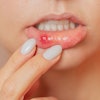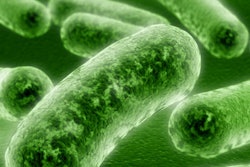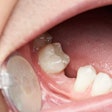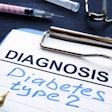
Obese adults and adolescents are thought to have certain gut and oral microbiota variations, but less is known about the corresponding relationships in young children. As part of larger study on obesity prevention, researchers examined the relationship between this bacteria in toddlers and their mothers and childhood weight gain.
They analyzed the gut and oral microbiota of 226 2-year-old children and found that the oral microbiota of those with more rapid infant weight gain was less diverse and had a higher ratio of certain specific bacteria compared with other children. Their research was published on September 19 in the journal Scientific Reports.
"Our results suggest that signatures of obesity may be established earlier in oral microbiota than in gut microbiota," stated senior study author Kateryna Makova, PhD, a professor of biology at Penn State University in University Park, PA, in a press release. "If we can confirm this in other groups of children outside of Pennsylvania, we may be able to develop a test of oral microbiota that could be used in clinical care to identify children who are at risk for developing obesity."
Identifying risk factors
Previous research has shown that certain patterns are present in the gut microbiota of obese adults and adolescents compared with other individuals: a lower diversity of microbiota and an elevated ratio of Firmicutes to Bacteroidetes bacteria.
While many studies have been conducted on gut microbiota and weight, few have examined oral microbiota and weight, with most of those investigating the relationship between periodontal disease prevalence and obesity in adults. However, some studies have found differences between the oral microbiota of obese or overweight adults or adolescents compared with that of average weight or lean individuals of the same age range.
“We may be able to develop a test of oral microbiota that could be used in clinical care to identify children who are at risk for developing obesity.”
At the same time, no studies have examined the connections between oral or gut microbiota composition and weight gain in young children, and the researchers of the current study sought to learn more about these relationships.
This research was part of the larger Intervention Nurses Start Infants Growing on Healthy Trajectories (INSIGHT) study, which is working to identify biological and social risk factors for obesity and testing whether a responsive parenting intervention during early life can prevent the development of obesity.
The current study included 236 mother-child dyads and data on the children over their first two years. The researchers collected information on clinical, anthropometric, demographic, and behavioral variables from the mothers and children.
Parents completed questionnaires on their children's food and drink intake and exposure to medications. The researchers also collected buccal samples from the children and mothers at the two-year visit (229 mothers and 225 children) and stool samples from 200 children within two days of that visit.
Their findings suggest that low microbial diversity and high content of Firmicutes relative to Bacteroidetes in the mouth of a 2-year-old were markers of elevated growth indexes during the child's first two years. However, they did not find a relationship between elevated growth indexes and either of these measures in the gut microbiota of the children. The researchers did, however, find a relationship between elevated growth curves in children and the diversity of their mother's oral microbiota.
They also divided the children into two groups of those with weight gain that was faster than average (n = 104), a predictor of later obesity, and those without (n = 122). The researchers found significant associations between rapid infant weight gain and both lower microbial diversity and a higher ratio of Firmicutes to Bacteroidetes in the oral microbiota of the children but no such relationships with gut microbiota. Additionally, oral microbiota diversity was significantly lower in mothers of children with rapid infant weight gain.
The researchers did not discover any associations between growth trajectories and diet. However, their findings linking a mother's oral microbiota diversity and her child's growth curves suggested the existence of a familial (genetic and/or household) microbiota signature connected to early childhood weight gain, they noted.
"These results suggest that by the age of 2, the oral microbiota of children with rapid infant weight gain may have already begun to establish patterns often seen in obese adults," the authors wrote.
Screening for obesity risk
The authors noted that this research didn't address the causal mechanisms of how oral microbiota might affect weight gain. However, if the current results are confirmed in further research, these findings could lead to the development of a noninvasive clinical test to identify children at greater risk of later developing obesity.
For now, the investigators are studying whether specific species of oral bacteria in mothers and children affect weight gain and obesity risk. They also suggested the gathering of data related to oral health and diseases, which they have not been doing.
"Data on oral cavity diseases should be collected in such future studies, as these conditions may be linked with microbiota and obesity," the authors concluded.


















